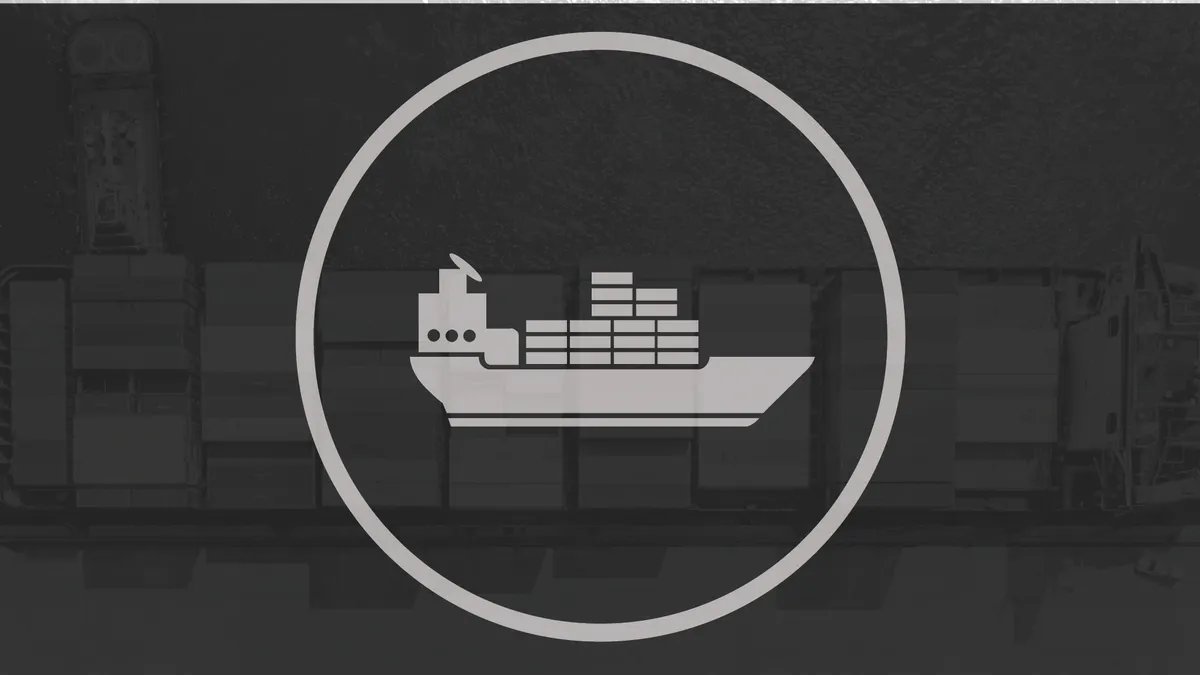Dive Brief:
- Peak season started with a bang in 2018 as shippers are paying some of the highest ocean freight spot rates to move products from China to the U.S. in more than two years.
- It cost $2,354 to ship a 40-foot container from China to the West Coast of North America as of Sept. 9, 2018 — the highest rate yet recorded on that trade by the Freightos Baltic Index, which began publishing live spot rates in June 2016.
- Shipping across the Panama Canal is no cheaper. It cost $3,514 to move a 40-foot container from China to the East Coast of North America on Sept. 9, 2018 — the highest rate recorded since January and February of 2017, when Chinese New Year and post-Hanjin service loop shifts combined to inflate costs (rates stood at $3,543 on Feb. 5, 2017).
Dive Insight:
If it feels like ocean shipping costs have inflated dramatically over the past two years, it's because they have.
In 2016, it cost $1,300 to ship a 40-foot container from China to the U.S. West Coast during the first week of August. This year, Freightos August data pegs the cost at $1,901 — a 46% rise. Prices in the East Coast are even higher, with rates rising 66% over that same time frame.
Yet, the shifts are not abnormal. Rather, they are a culmination of three big shifts in the market, according to Philip von Mecklenburg-Blumenthal , vice president of enterprise solutions at Freightos:
- Higher crude oil costs: On average, crude oil costs reached $71 per barrel on Aug. 31, 2018. That's 42% higher than the figures reported in August 2017, and 58% higher than August 2016, according to World Bank data visualized by YCharts.com.
- An earlier peak season: Peak season has been steadily moving earlier over time, and carriers have been adjusting rates accordingly. In 2016, August marked the start of peak season, but data this year suggests it has moved as early as July.
- Carriers cutting capacity: "Compared to last year, the carriers are taking out major capacity," von Mecklenburg-Blumenthal told Supply Chain Dive. In July, various alliances announced service shifts which, altogether, removed at least 31,300 TEUs of capacity from the market, according to Alphaliner.
The last factor is perhaps the most interesting, von Mecklenburg-Blumenthal said. Shifts in oil prices and an earlier peak season follow the market, but a cut in capacity reflects a shift in strategy by ocean lines.
The new strategy, he said, "is a pretty bold move," and it signals a bet by carriers who believe they understand the market well enough to compensate for a loss in capacity. As a result, carriers now fall under two categories: Those keeping prices low, competing with those cutting capacity.
This peak season, von Mecklenburg-Blumenthal said, the question to follow is "which strategy will win?"














